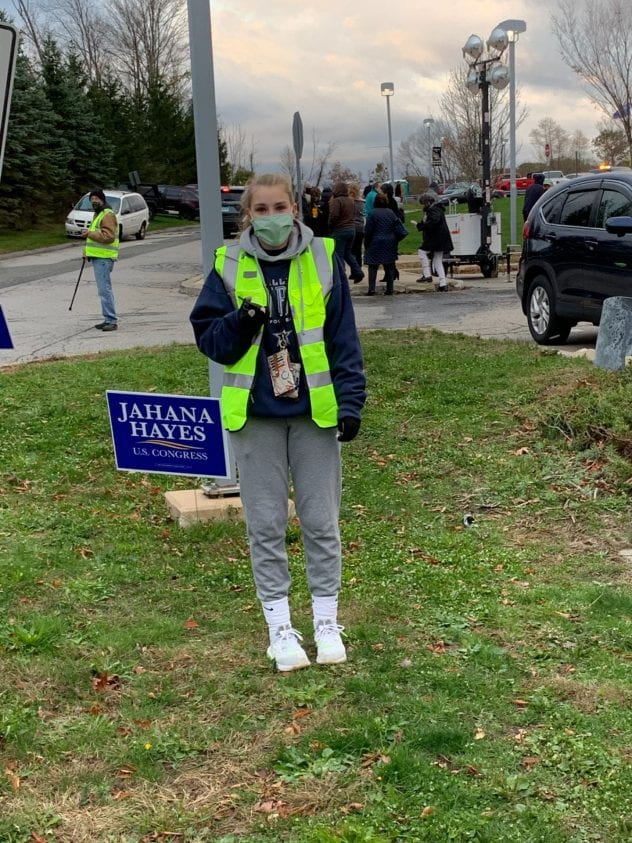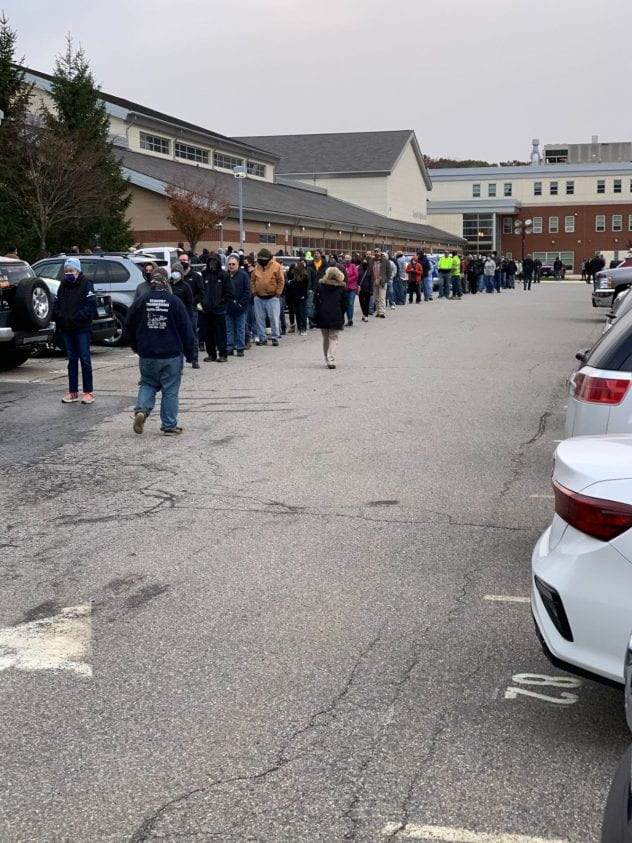The presidential election: one of the most important aspects of our American democracy. Every four years U.S. citizens age eighteen and up vote to decide who will be the next leader of our country. But what about those who do not meet the age requirement? Every four years for the past twenty four years, Terryville High School has been staging a mock election to allow high school students, especially those under the age of eighteen, as a glimpse into what it feels like to do their civic duty and become a voter. This begs the question, is the Terryville High School mock election an accurate replica of the federal presidential election?
I began by interviewing the person responsible for bringing the mock election to Terryville, Social Studies department chair, Mr. Nave. We discussed the process first. He came up with the idea of the mock election years ago and has been coordinating it since he came to teach at Terryville High. “I would say the process [of the mock election this year] was as close to real as it could be.”
The voting process starts with sample ballots from that year’s election, which are then distributed to students during their social studies classes. In prior years, the mock election used to use a traditional voting machine which Mr. Nave was able to borrow from the town’s Registrar of Voters. Once the state moved to electronic voting, however, Mr. Nave had to devise a new way to calculate the votes.
After filling out their ballots, students line up at the “ballot box,” which was actually a cardboard box with a slot cut out of the top, and wait to insert their ballot until their identity is verified and their name checked off of a full list of staff and students.
Faculty streamed in during their free periods to get a ballot and submit it. From October 26 to 30, THS faculty and staff went to the ballot box to vote. Voting was open all week, and the votes were counted by Mr. Nave over the weekend.

Poll worker Tiffany Pires (Class of 2020) on Election Day
Another way in which the federal election and mock election are similar is the availability of mail-in voting. Due to the dangers of the coronavirus, some students elected to remain distanced learners for the school year so they could not vote in person, which is similar to how many voters did not want to vote in-person this year because of the pandemic.
Just like with mail-in voting, all students were emailed a copy of the sample ballot so that they could print it out. Distance learners, and any student who did not have a social studies class to vote in, then took a photo of their ballot and emailed it Mr. Nave for their vote to count.
While Mr. Nave attempted to hold the election with fidelity, there were some main differences between the mock and official town elections.
At the federal election, there were multiple booths with checkers that used a computerized list of the addresses of all the registered voters in Plymouth.
These checkers would take the ID of a voter and make sure that the name and address on the ID matched up with the address the voter was registered under, making sure that no one was voting multiple times, voting for someone else, or committing some other form of voter fraud.
Then, the voter would be directed to the ballot clerks, who handed out pens and ballots. Next, voters would go to tables and vote securely behind individual privacy screens. Finally, voters would take their ballots to the ballot box where they would insert it into the box, which contains a scanner inside. At the end, voters could receive an “I Voted” sticker if they chose to.
Aside from the fact that it isn’t very viable for the school to conduct a full-scale mock election which included all of these voting stations, one important difference between the mock election and the federal election that stuck out to me was the lack of an ID requirement.
Under the Constitution, the states, instead of the federal government, are allowed to conduct the manner of elections however they may like. This means that there can be a difference in rules about voting from state to state. A main difference is ID requirement, where some states strictly require photo ID, others require non-photo IDs, and others do not require documentation to vote at all.
In our school’s mock election, the only identification needed was that Mr. Nave knew who you were. In our state, however, Connecticut requests that voters present some form of ID, but if the voter does not, they are able to sign an affidavit, a document swearing that they are the person they say they are.
While instating some sort of ID rule in the mock election would make it more representative of the federal election, it is not vital to the mock election and does not compromise the integrity of the election at all.
It is understandable as students do not generally carry ID on them, and there are enough protections against voter fraud in our small election that another protection would only complicate the election more.

People line up to wait to vote outside of THS
Attempts to prevent voter fraud were made; however, such that Mr. Nave made sure that only the four social studies teachers had ballots, just like how only the ballot clerks have the ballots in the federal election. Mr. Nave also personally checked off the names of all the students and staff who voted, just like the checkers in the federal election.
To ensure election security, all of the ballots were locked up at night and whenever Mr. Nave was not in his room, and the door to the room was always closed and locked. And just like how ballots are required to be held for a certain amount of time before they are discarded in the federal election, the mock election ballots are being held so that the election results can be verified at any time.
While the main goal of the federal election was to elect the next president of the U.S., the goals of the mock election were much different. Mr. Nave explained the true goal, “is to teach and encourage students to vote, to exercise their citizenship, and to become active participants in our society.”
AP U.S. Government and Politics teacher Mr. Schumann agreed, saying “[…] being able to look at a ballot and understand how our democracy works is a critical step in ensuring that students are ready to become active, and crucially, informed citizens when they are able to vote in elections.”
While students’ votes didn’t actually “count” toward anything or make a difference in the country, their participation in the mock election prepares and encourages them to vote in the “actual” election, where their vote could potentially decide the fate of the entire country.
Voting is both a right and a responsibility, and I think this mock election teaches that concept to students very well. Another goal of the mock election was to foster discussion in classes, such as AP U.S. Government and Politics about how politics matter to us. In the words of Mr. Schumann, “[W]hether we like to admit it or not, politics matter to all of us. We may not immediately recognize it, but at some point, the decisions of our elected officials (or, indecisions) will affect us.”
Written by Rebecca Dorsey

